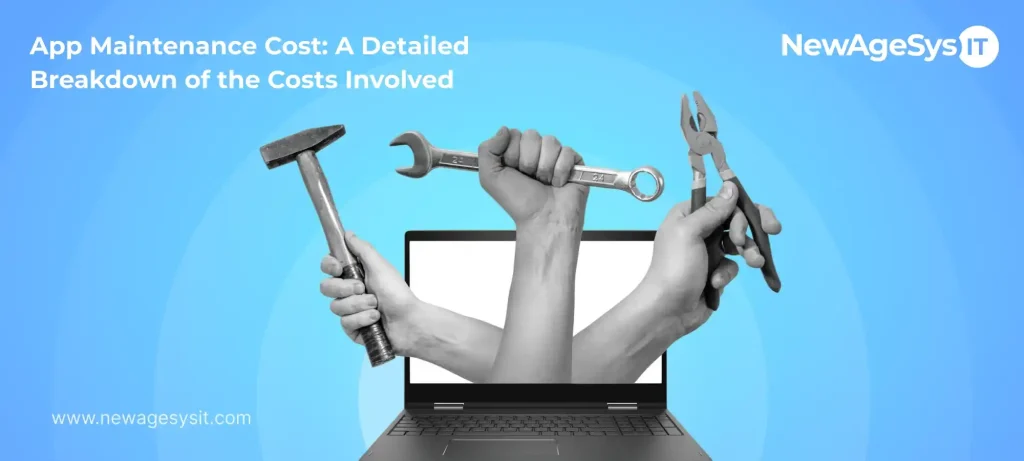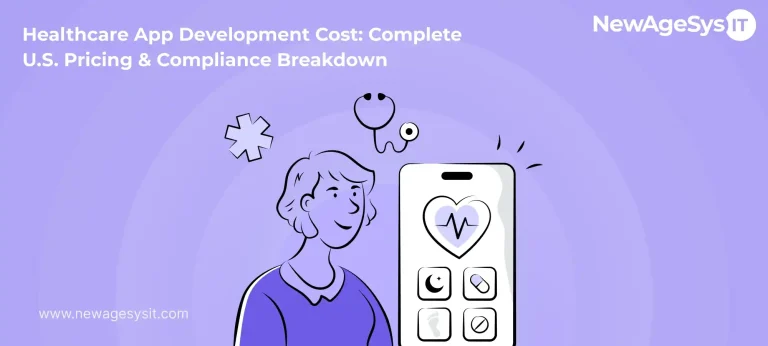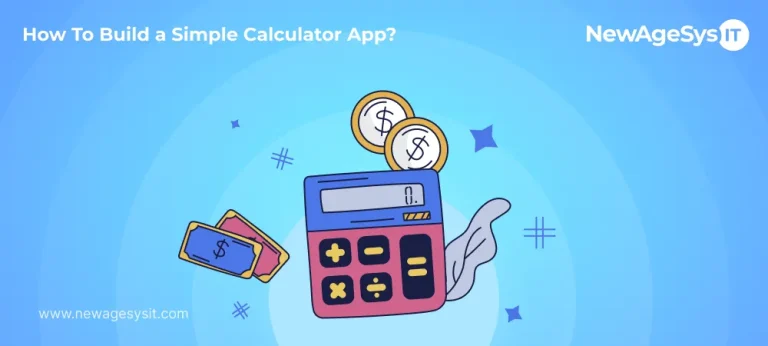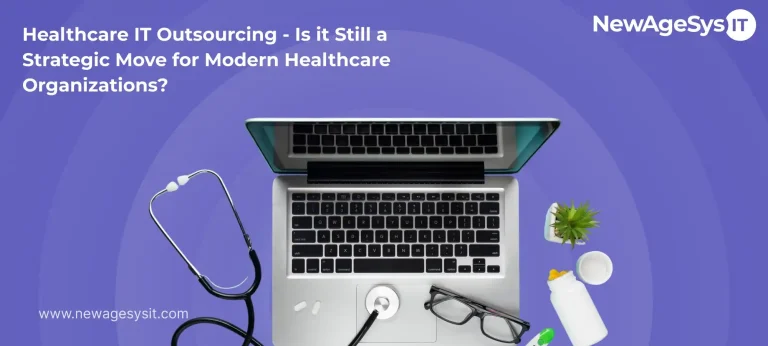| TL; DR App maintenance is essential post-launch to fix bugs, release new features, and stay OS-compliant—it can cost up to 50% of your app’s build cost in the first year, then can drop to 15–25% yearly. 62% of mobile apps go unused monthly, and 1.1 million apps were delisted from Google Play in Q2 2024 alone, which highlights the need for ongoing updates. There are 4 main types of app maintenance: Perfective, Adaptive, Preventive, and Corrective. Together, they ensure your app evolves, remains stable, and continues delivering value. Average mobile app maintenance costs range from $2,000–$2,500+/month initially, and can vary based on servers, push notifications, updates, customer support, and app store fees. Proactive maintenance boosts ROI, reduces downtimes, enhances UX, prevents uninstalls, and strengthens security to meet compliance standards like GDPR and CCPA. Tips to reduce costs: Build MVPs, use cross-platform tech, adopt AI-based analytics & automated testing, follow UX/UI trends, and partner with an expert development team. |
Mobile app development doesn’t just end at app launch; post-launch support and app maintenance are part of the journey. Even the best and popular apps need maintenance and upgrades to stay highly functional post-launch. As a business owner, you would be worried about the potential app maintenance costs that might impact your overall app development budget. However, poor app maintenance is scary, and there are many ways to keep your mobile app maintenance costs under control and maintain a healthy app.
Despite the availability of a vast number of applications, about 62% apps remain unused every month. However, a key question comes here: what does app maintenance mean, and how much does app maintenance cost? In this blog, let’s take a detailed look at these aspects and also understand the tips to reduce the cost of app maintenance.
App Maintenance- An Overview With a Real-World Context
App maintenance is a key factor that helps a business to maintain its applications and keep them running smoothly while updating to the latest trends and preventing all possible bugs/errors.
Let’s consider WhatsApp, for example. WhatsApp has regular updates and addition of features like security, bug fixes, and the deployment of new functionalities, including payment integrations. These efforts to maintain and scale the app have contributed to its increasing popularity and dominance in the social messaging niche. They had faced many challenges in server management due to a large user base, security issues, and payment integration concerns, too. With regular updates, end-to-end encryption, and feature additions (like disappearing messages), the app had addressed these concerns.
Another example is Instagram. It initially came up as a photo-sharing application. Instagram had then evolved with consistent maintenance and updates. Instagram has evolved from standard photo filters to advanced features, including Reels, Stories, and IGTV, aligned with the user patterns and technological trends.
Four Types of Mobile App Maintenance
The mobile world has gained prominence due to its complex device and app ecosystem. While talking about mobile app maintenance, it is of four major categories:
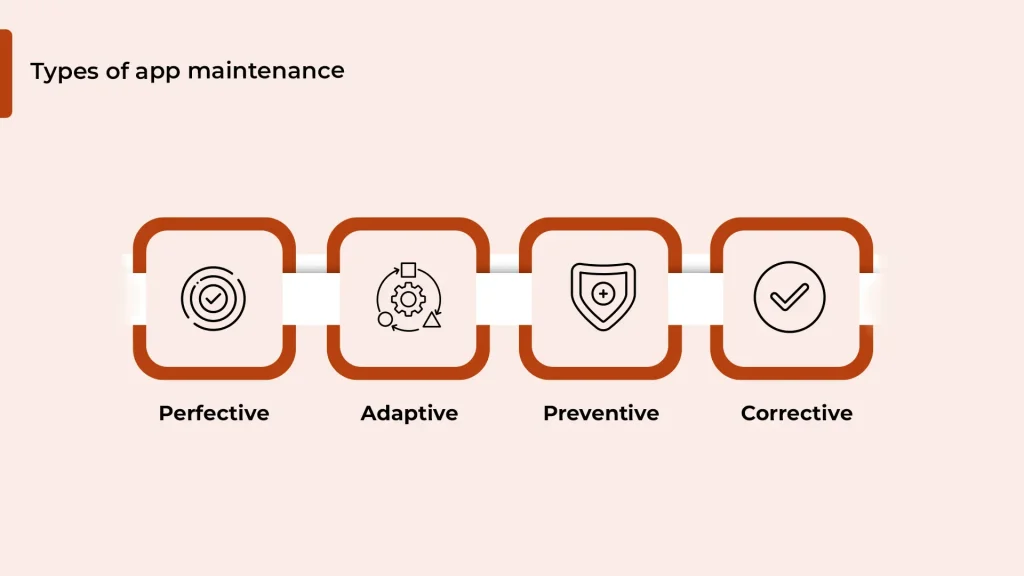
Perfective Maintenance: Implemented to enhance the overall app performance and add new features. It is usually utilized to address specific concerns that users identify and also improve the user experience.
Adaptive Maintenance: It ensures the compatibility of an app with new operating systems or device versions. Generally, it is used to adjust specific operating system components or the hardware/software ecosystem.
Preventive Maintenance: Implemented to detect, eliminate, and fix issues in an application and depends on active monitoring. It is as such utilized in an ongoing process.
Corrective Maintenance: Executed to report malfunctions. It is employed to fix any identified concerns.
Why is Maintaining & Updating Mobile Apps Essential?
As a business owner, you should focus on long-term maintenance to avoid your app from getting outdated. The delisted mobile apps as per Google Play have hit 1.1 million in the second quarter of 2024, which is pretty high. Here are the benefits of mobile app maintenance:
1. Ensuring Mobile Apps Stay Updated & Minimizing Uninstalls
It is necessary to understand the users’ preferences and tailor features that go well with their preferences. At least one in every two installed apps is uninstalled within 30 days of being downloaded, according to a recent report. This highlights how highly users adore functionality and benefits, leading them to delete the application if it doesn’t align with their expectations.
Hence, continually tracking users’ preferences and expectations, and updating the app is essential. App Store enforces high-end quality guidelines, and if the app can’t keep up with them, this will be rejected.
Declining app rankings can push platforms to remove your application during the periodic cleanups. Update your app with the latest APIs and features to keep it relevant and high-performing.
2. Delivering Superior User Experiences
With an exquisite user experience, you can enhance the user retention rate. Ease of navigation, reduced load time, and a user-friendly interface influence the user experience and their ability to continue using your application. Superior UX can also drive more users, leading to an increase in ad revenue and in-app purchases. Happy users also leave positive reviews and help improve app store rankings.
3. Enhancing Return on Investment (ROI)
With regular app updates, you can gain many financial benefits, such as scaling ROI. It also provides opportunities to find the best ways to minimize cost to maintain an app and gain new users. Regular maintenance can let you address occasional bugs quickly, spread the costs of fixes over an extended period, and optimize the investment.
4. Managing Downtimes & Revenue Loss
Downtime can bring substantial losses in revenue. Many companies and tech giants have faced huge financial losses due to downtime. With proactive management of downtimes, your team can reduce losses and create a high user experience.
5. Resolving Security Concerns
As technology evolves, security threats also take shape. Continuous maintenance support and updates help to keep your app secure against security breaches and vulnerabilities. This also incorporates compliance with platform-created privacy policies and GDPR/CCPA regulations.
6. Keeping App Market-Relevant
Keeping the app updated with the latest technological trends and users’ demands is important to stay competitive. This would involve integration of new technologies, interface redesign, and incorporating new features to make the app engaging in the continuously evolving market.
How Much Does Mobile App Maintenance Cost?
When you consider the costs of maintaining an app, there are many factors to consider: these include push notifications, server management, payment integrations, and many more.
Once your app gets launched on the Google Play Store or App Store, you should monitor the metrics, for instance, Daily Active Users (DAU), which includes the number of app installs and users engaged. Also, tracking Monthly Active Users (MAU) offers a broader app engagement overview. With higher DAU and MAU, you can indicate that the app is successful.
Now, how much does it cost to maintain an app? In the app development lifecycle, the maintenance stage occurs after the app is developed and launched. In this phase, you can also expect 50% of the overall development costs in the first year. The figure gradually reduces to almost 15-25% in the subsequent years.
Furthermore, in case the app supports various operating systems like iOS or Android, maintenance costs can slightly increase. App owners should expect an initial spending of between $2,000 and $2,500+ monthly to keep the application working optimally.
The optimal strategy is to allocate around 20% of the initial development cost for app maintenance. For example, if your mobile app was developed for, say, $150,000, you can expect $30,000 as the app maintenance cost per year. The budget usually includes bug fixes, feature improvements, OS support, server maintenance, etc.
Here are some recurring expenses you can expect in the maintenance phase:
| Expense Head | App Maintenance Cost Per Month (in $) |
|---|---|
| Servers | $100-$200 |
| Push Notifications | $10 |
| Payment Integrations | Up to $149 |
| Emergency App maintenance | Based on the emergency |
| App Store Developer Fee | $25 ( for Google Play) and $99 (for App Store) |
Now, let’s discuss the items you should keep in mind while thinking about the cost of app maintenance:
- Hosting Fees
- App Updates and New Features
- Customer Support
- App Store Fees
1. Hosting
Based on the app size and app complexity, hosting fees can range between $70 – $320 per month. In case you have a simple app without user login or database requirements, you can use a shared hosting plan. But, with complex features such as user login or e-commerce components, you need to spend more on dedicated hosting.
2. App Updates & New Features
You will need to add new features or update the existing features over time. Generally, the cost of updating an app depends on the app developer’s wages. The average rate (per hour) of a mobile app developer in the U.S. ranges between $41 and $54. Hence, the cost of incorporating new features mostly depends on the project’s scope.
3. Customer Support
After the app goes live, you need to offer customers support. The customer support costs can change based on the number of service reps you would need and the hours they work. The total cost can vary based on the scope of the project. However, generally, reps charge anywhere in the range of $15 – $20/hour.
4. App Store Fees
Listing your app in the Play Store or App Store has a constant price. For a developer account, you should pay an annual listing fee of $99 for the App Store, while this is $25 for the Play Store. Also, both stores take a 30% cut of every in-app purchase made via their platform, though this also has certain exceptions.
If you wish to make a successful mobile app, you should be ready to invest in upkeep as well. If you don’t have an in-house team, it is always great to have an app development agency to help you maintain your application.
Monthly vs Yearly App Maintenance Cost: Things to Consider
While thinking about your app’s future, you should also consider the time and cost to maintain an app. Let’s take a glance at the annual and monthly models:
| Factor | Monthly Maintenance | Annual Maintenance |
|---|---|---|
| Price Range | $2,000 – $2,500+/month | 15–25% of the initial development cost |
| Services Offered | Bug fixes, app monitoring, quick updates | Major OS updates, performance optimization, feature rollouts |
| Great For | Apps that need regular updates or 24/7 support | Stable apps with fewer changes or seasonal updates |
| First-Year Cost | Could be higher due to bug-fixes & patches | Almost 30–50% of the initial cost in the first year |
| Flexibility | Pay-as-you-go model | Cost-effective with a planned approach |
Factors that Impact the Maintenance Cost of an App
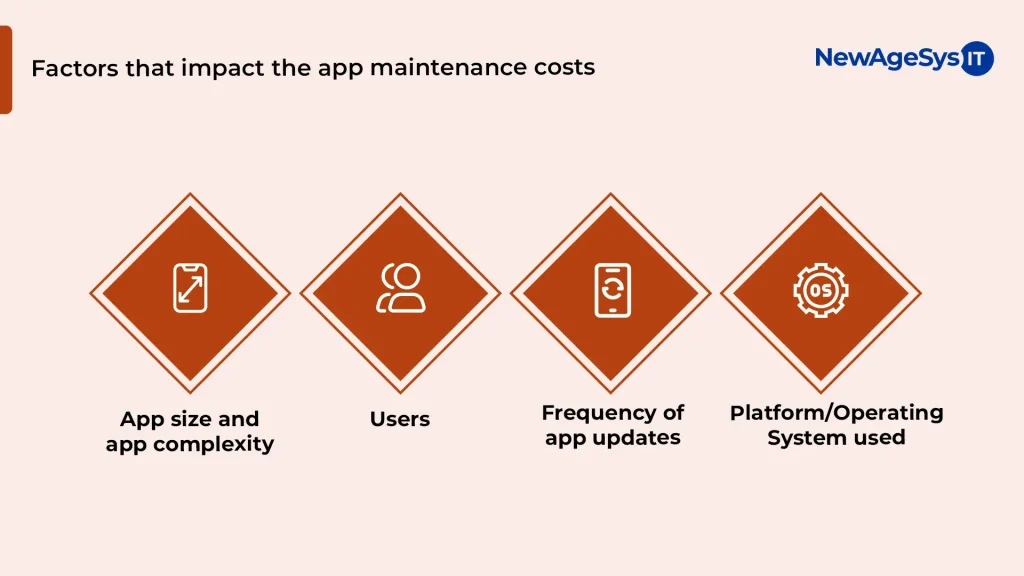
While considering the app maintenance cost, the factors that play a significant role in overall app maintenance costs are:
- App size and app complexity
- Users
- Frequency of app updates
- Platform/Operating System Used
Let’s go through these factors in detail:
1. App size and app complexity
A simple yet small mobile app requires less time/effort to maintain compared to a complex and large application. Why? It’s because a simple app uses less code and has fewer features, while a complex app would need more features and code. With a larger and more complex app, you will need to maintain it at a higher expense. If you wish to add more features or require interoperability, you can seek expert support for your project from a leading app development company.
2. Users
An application with more users would need more resources for app maintenance than an app with few users. With a larger number of users, you can create significant data, which can turn challenging to manage. It can definitely lead to more concerns regarding customer support, which in turn increases the maintenance cost of an app.
3. Frequency of app updates
An app with frequent updates will need more resources for its maintenance. Every update requires mobile app testing and deployment, which takes time and impacts the cost. To add to the complexity, every update may also introduce additional bugs, which further increase the maintenance cost.
4. Platform/Operating System Used
An iOS app will demand different resources compared to an Android app. This is because both are different operating systems having unique architectures. An iOS app requires maintenance that differs from an Android app.
With major technological giants like Google and Apple rolling out more frequent annual updates, your business needs to keep its app compatible. For instance, iOS 17 introduced features such as Focus Modes and advanced widgets, which demand apps to adapt for better performance.
According to Statista, over 60% of applications require additional compatible modifications within three months of a specific update to the mobile OS (Android, iOS), which receive frequent updates.
Best Practices You Should Follow During App Maintenance
The following best practices for app maintenance can help you provide users with an exceptional user experience:
- Incorporating New Feature Updates: Considering areas of improvement and learning new features that enhance your application is an ideal move.
- Updating User Interface: Keep your user interface up-to-date with the latest trends and user behavior. This allows you to keep users satisfied.
- Performance Monitoring: Check the app’s performance, including assessments of load times, responsiveness concerns, and lags. Stay up-to-date with analytics reports, know the app’s retention rates, understand customer usage patterns, and monitor engagement/conversion rates.
- Scheduling System Maintenance: Scheduling system maintenance helps eliminate bugs and issues. Inform users about maintenance-specific downtime during app updates.
Tips and Hacks that Help You Optimize Mobile App Maintenance Cost
After app development, you shouldn’t spend too much on app maintenance. Hence, here are some tips to follow for saving on app maintenance costs.

Choose the Right App Development Platform
You can either build multiple native apps to fit various platforms or opt for single cross-platform apps, i.e., those that run on multiple platforms with a unified codebase. Therefore, to maintain many native apps, you would need to spend more than for maintaining a cross-platform application. Nevertheless, cross-platform applications save app development costs and time.
Build an MVP App
At an early stage, we recommend building an MVP app with the necessary features. Including unnecessary app features will cause crashes and increase loading time after a certain point. If your users provide feedback, you can integrate more features into the app. Otherwise, it is fine to keep the app as simple as possible.
Adopt the Most Advanced Development Trends
In this way, you can minimize the app maintenance costs. Ensure your app aligns with the recent trends; you will need to update it regularly to align with users’ expectations. This will ultimately lead to increased expenses for app maintenance. For instance, if you need to work on a fitness-related app, then you would need to include the modern trends such as AI, wearable integration, etc., hence the cost to build a fitness app can be impacted. So, always follow the recent trends to evaluate the average app maintenance costs.
Discuss Your Plan with Your App Development Partner
Before coming to a final decision, you can consult a technical expert who can propose a plan and an app maintenance budget to help you optimize the expenses. Hence, communicate your budget with the team, who can help you make better decisions.
Latest Mobile App Maintenance Trends You Must Watch Out For
Here’s a glance at the latest trends of mobile app maintenance you should learn, understand, and plan to make maintaining apps easier, consistent, and streamlined.
- AI-Powered Analytics Tools: AI tools, such as Mixpanel and Amplitude, help analyze user behavior and easily identify areas for improvement.
- Auto-Testing: With automation frameworks like Appium, you can minimize testing time and scale the accuracy of bug detection.
- Emphasizing Accessibility: Users with disabilities need apps that provide accessibility options and adherence to guidelines, say, WCAG 2.1.
- Subscription Models: While shifting to these revenue models, app developers should update apps consistently to encourage subscribers’ retention.
The Need for the Right Technology Partner For Your App Maintenance
App maintenance services make sure that businesses not only build applications, but also continue offering security, scalability, and adaptability to customers with continuous improvements and maintenance support. With the help of expert app developers, you can leverage technological advancements and business changes and incorporate these changes into your application for a better user experience.
At NewAgeSysIT, in addition to software development, web app development, and mobile app development, we also help you maintain and improve the overall app performance. With highly experienced app developers and keeping a track of app performance, market trends, and recent technologies used, we let you ensure the long-term scalability of your applications with the best maintenance support.
If you wish to build exceptional app experiences and minimize maintenance costs, we have a team of mobile app developers ready to help you with their expertise in emerging technologies and nuances of the mobile app development segment. Would you like to know more about our app maintenance services? Let’s talk.
FAQ
1. How long does app maintenance take?
App maintenance time is an ongoing process and it can usually be scheduled monthly, quarterly, or yearly based on the complexity. With consistent app updates, you can ensure the app’s performance, bug fixes, and lower app operation costs over time.
2. How much does it cost to maintain an app?
App maintenance cost/price usually ranges between 15-25% of the initial development price. It can also rise to 50% because of the major updates and OS support.
3. Do apps need maintenance?
Of course, yes. Apps need maintenance to stay highly functional, secure, and compatible with new devices. Without consistent app maintenance, app running costs can be scary, due to the breakdowns, bugs, outdated features, etc.
4. How to do app maintenance?
Mobile app maintenance includes fixing bugs, updating app features, tracking performance, and ensuring compatibility with OS. With a reliable app maintenance partner, you can manage updates, maintenance, and lower app operation costs, and ensure long-term stability.
5. How often do apps need maintenance?
It is always ideal to go for one to two minor improvements per month. This can include the app redesign, small upgrades, or the addition of new features. Incremental improvements are effective than bigger app upgrades. However, the app update frequency can vary based on the app’s functionality and goals.

